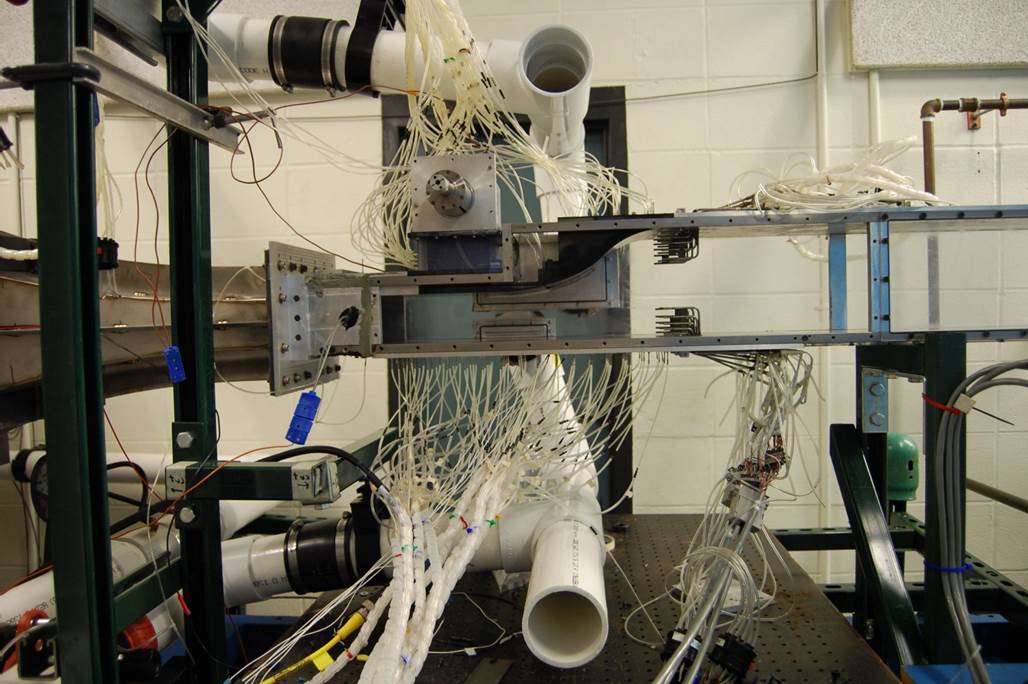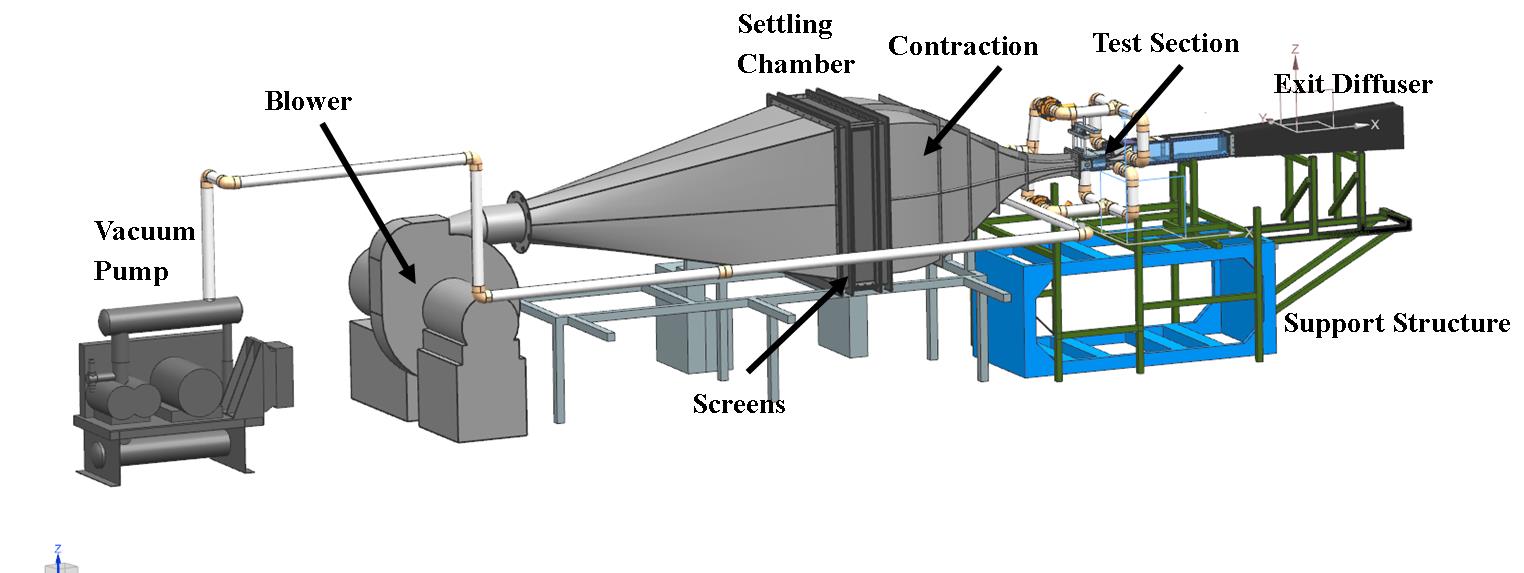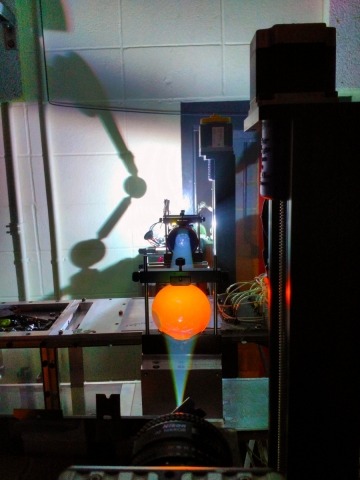Compact inlets with an S-shape have become widely used in aircrafts due to the numerous advantages compared to conventional ducts. However, due to their low length to diameter ration and low aspect ration, there are some flow phenomena, which are undesirable such as massive separation leading to losses in total pressure and secondary flow structures causing distortion at the Aerodynamic Interface Plane (AIP). These drawbacks need yet to be overcome in order to apply these ducts on a wider range of vehicles. A new high subsonic wind tunnel (up to Mach 0.83) was designed and built with the goal of decoupling the two flow phenomena, such that a more fundamental study on the interaction between massive separation and the flow control actuators could be conducted.

Figure 1: Test section with suction pipes and flow control actuator

Figure 2: Experimental facility

Figure 3: Pressure recovery comparison for the different flow control actuators

Figure 4: Schlieren Experiments